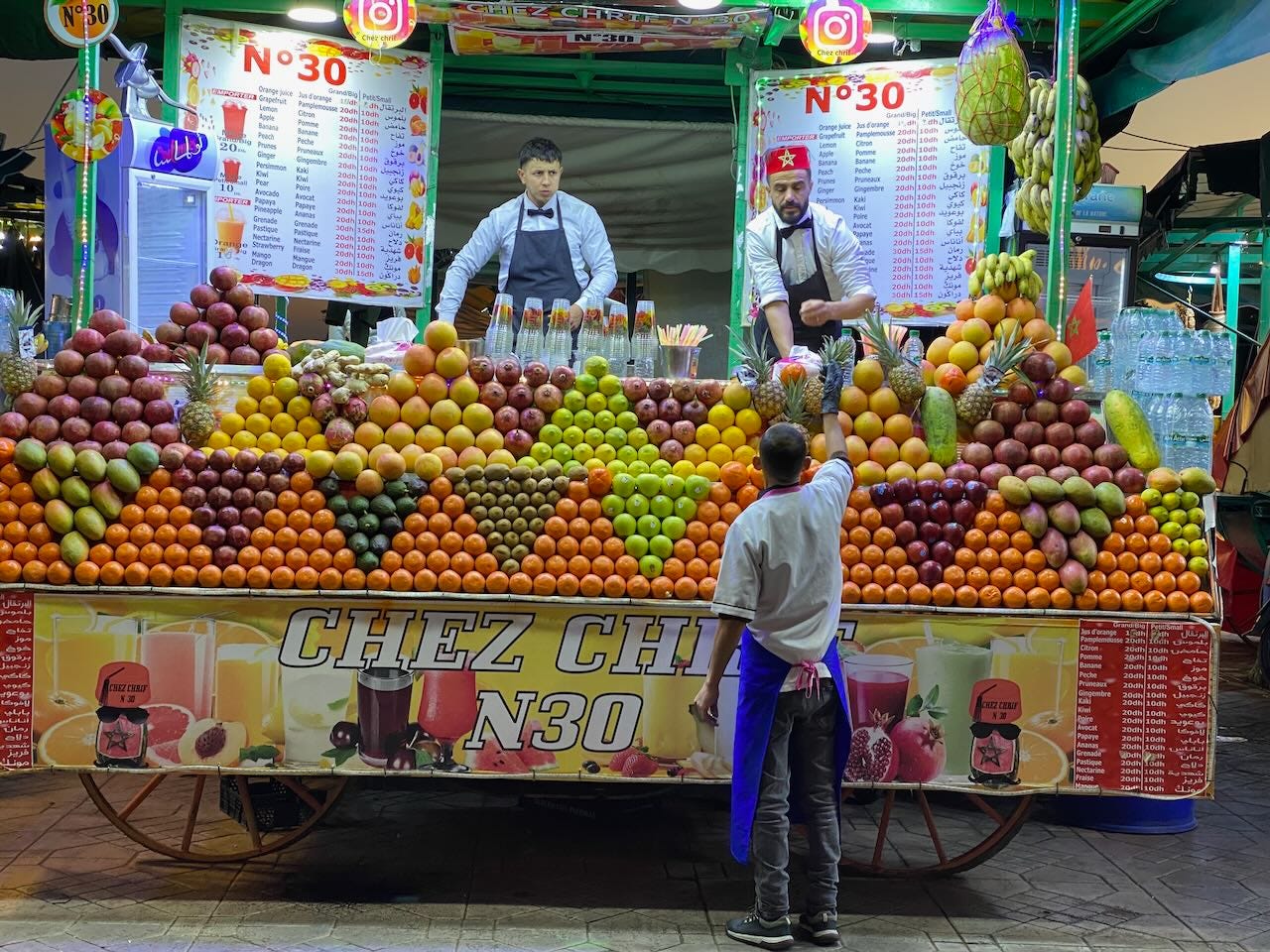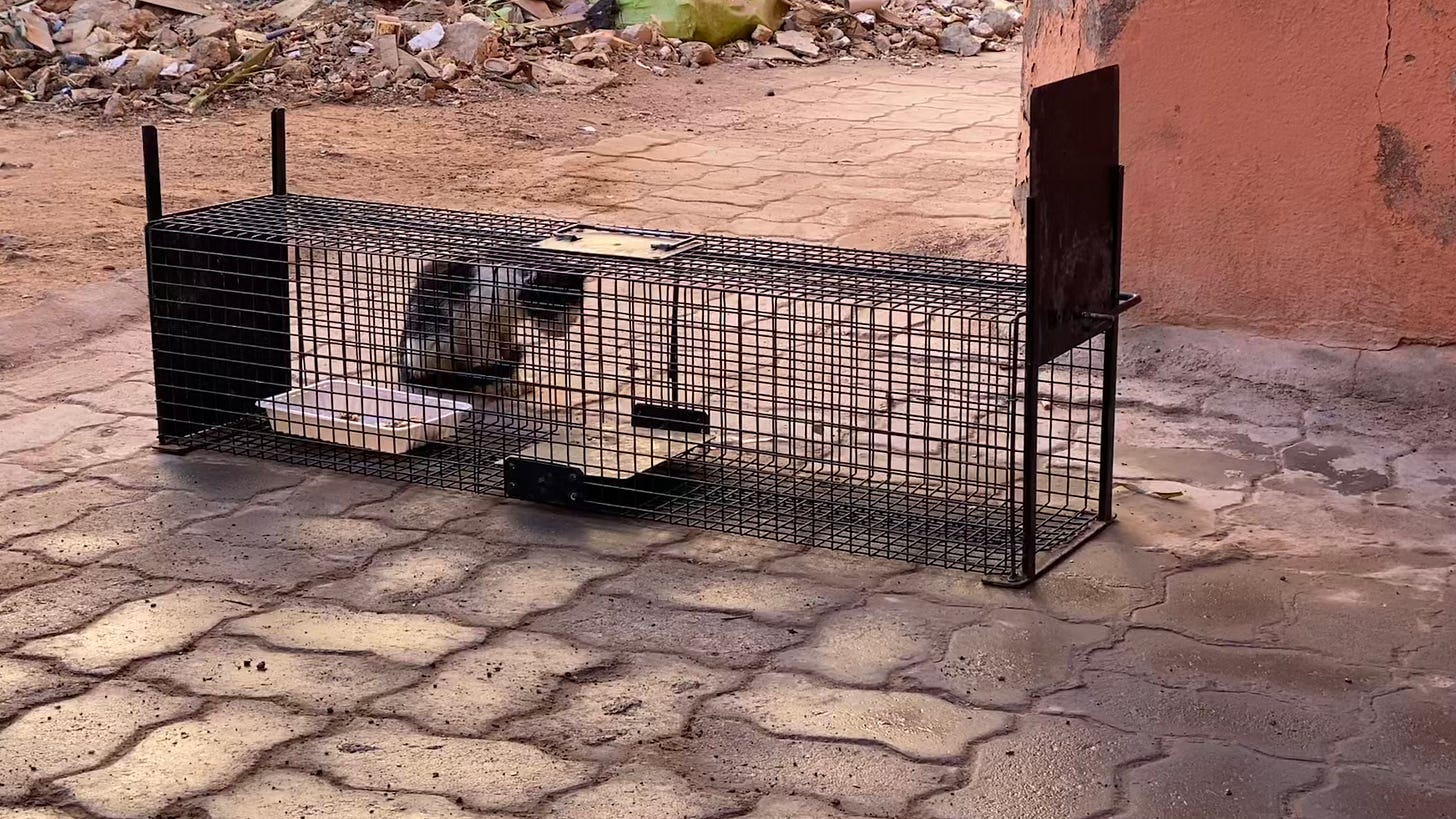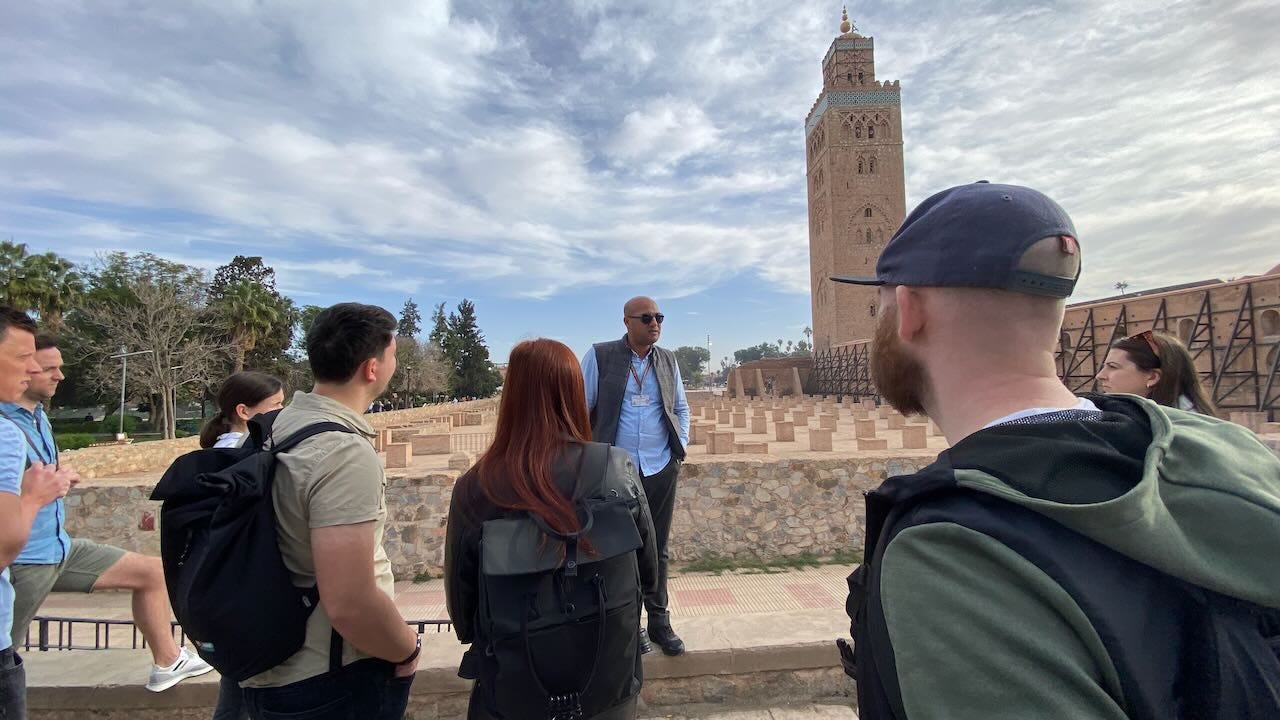Marketing Marrakech
There's no shortage of activities in this bustling Berber metropolis or in the surrounding mountains, sadly the site of a deadly earthquake on Sept. 8.

Marrakesh is a market city. Spiralling off the central Jemaa el-Fnaa square are thousands of shops selling everything from, literally, soup to nuts. The stalls are mostly packed to the rafters with trinkets, tea pots, spices, rugs, bags, knock-off fashions, leather goods, lamps, cellphones, electronics, jewellery, pottery, cookware … and the list goes on and on.






There’s a lot of overlap as well, with stalls selling virtually the same goods just a few feet from their erstwhile competitors. But even when the streets are packed, few of the shops seem overly busy and the shopkeepers are often either staring into their phones or working to catch the eyes of passers-by. Like the barber who said he could take 10 years off my look … until, laughing, I removed my knitted cap, my only clothing purchase since arriving to unexpectedly cold Arabian nights.
The economics of it all confuse me. The combined inventory of all these small businesses must amount to tens, perhaps hundreds of millions of dollars, but only a fraction of that is sold on any given day. Their very existence, and the fact that these markets have been active for thousands of years, is proof that the formula works tho. It’s just a bit of a mystery to me how most seem to be thriving.
I’m not doing much to help in that department, unfortunately. Aside from nuts and dried fruits, I’m not much of a shopper. Travelling out of one suitcase and a knapsack means luggage space is at a premium. Anything new would have to take the tight space occupied by things I had considered essential when I packed for Morocco in late November. Okay, it’s true I haven’t used my beach shoes yet, but I’ll be heading to the coast this week and have booked a few nights at Essaouira’s Beach Hostel. So things look promising for the shoes and maybe even my swim trunks, tho I suspect the water temperatures of the Atlantic Ocean won’t be enticing me to take a long dip.
In any case, there’s definitely no room for a tea pot, let alone a tagine pot, no matter how much I love that Moroccan specialty.
I have unfortunately been swamped with work since I got here, so I’m not seeing anywhere near as much of Marrakesh as I’d have liked. The telework was supposed to arrive in my email while I was in my quiet AirBnB in the less-than-exciting city of Casablanca in early December. But delays on the client end ensured I got it just as I was leaving for my hostel in Marrakech, with a deadline of Dec. 29. So of the two weeks I will have spent here, about 10 have been work days, at least in part. Not ideal for vacationing—or writing blogs—but, hey, someone has to pay the bills!
So I am going to let some photos and videos do some of the talking for my extracurricular Marrakech experiences. I know they make it look like I’ve done a hell of a lot, but there’s a ton more I’d have done if I wasn’t neck-deep in revising the translation of a 272-page textbook.
Let’s start with the aftermath of the earthquake that struck Morocco on Sept. 8. The 6.8-magnitude quake killed an estimated 3,000 people and was centred in the High Atlas mountains, about 75 km southwest of Marrakesh. The deadliest destruction was in the Berber villages and settlements in the mountains, where rockslides and traditional but artisanal construction techniques contributed to the death toll. Many residents there are still living in tents as the government struggles to rebuild critical roads and infrastructure.









Moroccans love their cats, considered to be much cleaner than dogs and consequently welcome in the homes, streets and alleys of places like Marrakech. In Canada, we’d consider most of them to be strays, but they are well-cared for and fed by the community, regardless of who might claim to “own” them. In turn, the cats help keep rodents under control and provide countless opportunities for tourists to take photos. You pet them at your own risk, however. Some love a little attention, but you never know which they might decide to warn you off with a scratch or bite. Local animal welfare groups will sometimes try to trap particular cats to give them medical attention, but as my video demonstrates, the kitten near my riad was either too smart to take the bait or too dumb to figure a way in. My money’s on the first option. It wandered off without the free meal that trapped another feline about 15 minutes later.







I managed to take a day trip to the Imlil valley in the Atlas Mountains, which included a visit to a women’s collective that makes everything from a sort of peanut butter to perfumes and dry lipsticks from the oil of argan seeds. Argan, in case like me you never hard of it, is the tree made famous in photos of the goats that climb them. From there we went to the mountain village of Toubkal and its small waterfall, with North Africa’s tallest mountain, Jbel Toubkal, looming in the background.
Then after a wonderful lunch in the home of a Berber villager, it was off to the village of Asni, where we were served yet more delicious mint tea and dressed in traditional clothing . I hadn’t noticed when I booked the tour that it included a camel ride, so asked about the treatment of the animals. We were told they only worked two hours in the morning and two in the afternoon and were regularly checked by veterinarians.
To tell the truth, I’d rather have just stayed to pet these beautiful creatures than ride one, but the trip only lasted abut 15 very leisurely minutes, most of which I spend petting the neck of the camel right behind me, ridden by my adopted hostel daughter, Beth, whom you met in last week’s column and you can see in this video.
I also took a 3-hour walking tour on my second day here, a great way to get to know the key sites in the traditional medina area. It’s a free tour, you choose (or not) to tip at the end. Our guide was knowledgable and engaging, even coming to the rescue of a tour member with low blood sugar, so I think he did pretty well from our group of 20.
Okay, I need to get back to the paying work now! You can help make this blog a paying proposition too, if you like, by taking a paid subscription for $50 a year or $5 a month. No pressure tho, I’m happy that you’re along for the tour, regardless of whether you want to tip!
See you on the beach in Essaouira!








